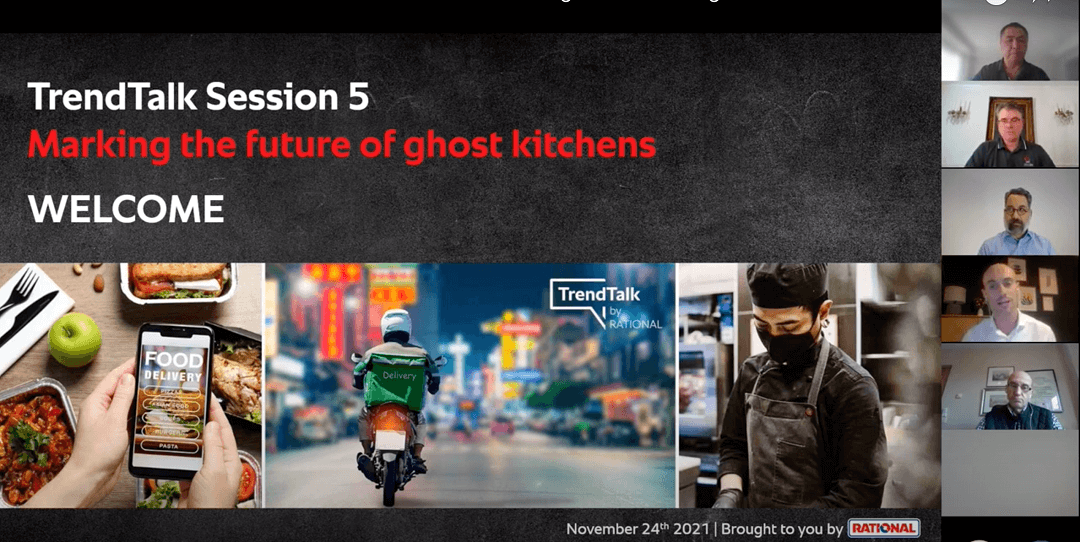
Image: RATIONAL
Hosted on Wednesday 24 November, the fifth TrendTalk live and interactive webinar from Rational addressed ghost kitchens and their burgeoning influence across the foodservice market. Michael Jones, editor of Progressive Content and FCSI’s ‘Foodservice Consultant’ magazine, discussed with guests the changes to the wider foodservice landscape due to the pandemic, where the sector headed, as well as what the future holds for an industry adapting to changing customer preferences.
More than 250 participants from 30+ countries dialed in and participated in the webinar. Speakers included Marc Choy, President of Ghost Kitchen Brands, Thierry Rousset, Managing Director of QSR Consultants, Randy Murphy, CEO of OrderB4 and Rational‘s ghost kitchen guru, Stephan Leuschner.

Image: RATIONAL
The rise (and rise) of the ghost kitchen
Choy, who joined Ghost Kitchen Brands, founded by George Kottas, in 2020. The company has successfully integrated 20+ restaurant brands onto one platform, which Choy felt solved many problems regarding customers satisfaction. “If both you and your wife wanted delivery, you’d need to place two different orders. Either one of you would have to compromise or you’d need to get two different orders, two different drivers, pay two different fees, and come in at two different times. But when all our menus and brands are combined, it solves that problem.”
To expand their business model and bring in more brands, Choy explained that their most recent partnership with Walmart, the largest retailer in the world, as truly gamed the game in the sector. “We have over 100 stores and are in discussions with Walmart right now to integrate our technology and menus, and we’re even working on countries in South and Central America. Walmart being on board was a great milestone for us.”
Sieh dir diesen Beitrag auf Instagram an
Continuing to discuss their brand model success, Choy referenced how, six months ago, Ghost Kitchen Brands closed their first round of financing. So, in addition to their brand and retail partners, they also have financial partners who believe in them. “As our business scales, we’re going to need more money and more resources to be able to support growth, so the investor group we’re able to attract becomes a very valuable strategic partner not only for their funds, but to add value as well.”
Customer satisfaction is crucial
Despite the rapid popularity of ghost kitchens, Randy Murphy, CEO of OrderB4, acknowledges its challenges. He believes that the success of an operator and the brand depends on the adoption of technology frameworks that track order consistency, accuracy, and timeliness (CAT). Customers are crucial to the success of any company. “We know next year will be a tough one for consumer spending in the United States due to inflationary spending. The average wage or net wage is actually going down. Customers must understand the value of where they’re going, particularly in a ghost kitchen scenario,” he said.
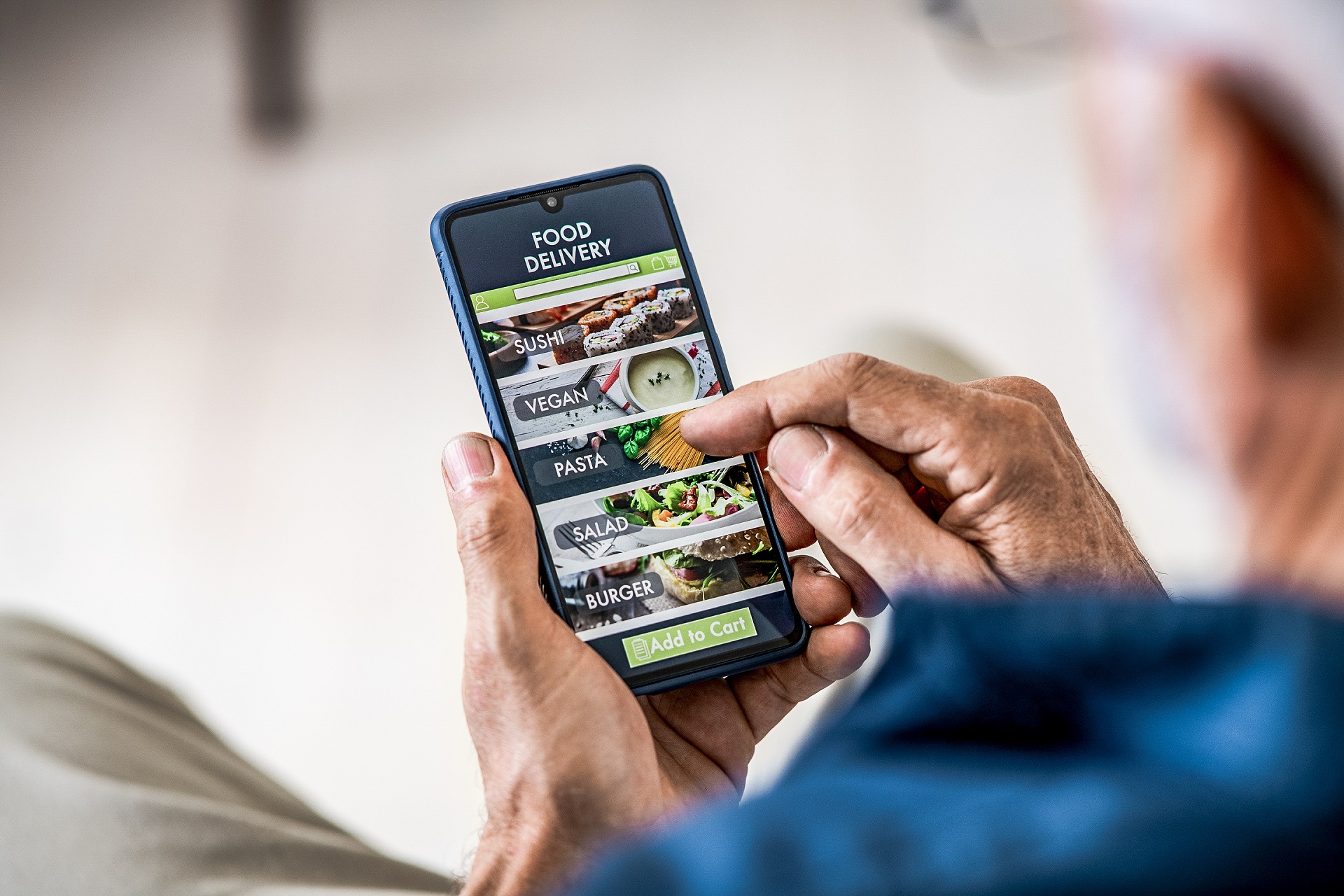
Image: Shutterstock | Rido
In order to be successful, whether in the virtual brand or a ghost kitchen environment, organizations must use technology, and they must not only be able to deliver and dispatch orders, but also have them completed correctly, which Murphy said is OrderB4’s primary goal.
Getting franchisors into dark kitchens
Ghost kitchens are evolving and changing markets. Madrid-based Thierry Rousset, Managing Director of QSR Consultants, says he first became interested in dark kitchens about three years ago, when he began interacting with Salima Vellani, the founder of Kbox. While she was setting up his kitchen, he recalled how she was speaking to franchisors and advising them to reconsider how they were entering new international markets and to use dark kitchens to gain a larger share.
Previously, Rousset became more involved in dark agenda, where he advised a Spanish restaurant company to come to the UK via the dark kitchen route, giving him the opportunity to tour nearly all the different kitchens in London at the time.
The competitive environment has made it more difficult for brands to stand out. “What I am telling franchisors is to get into new international markets through a dark kitchen and operate that kitchen for 12 months to 18 months, maybe even less,” he said. “Then, once you’ve done that, after that period of time, you’ll have actual data, you’ll know your customer profile, you’ll know the average ticket and you’ll know what works and what doesn’t. After you have made the necessary changes to your menu, we can help you find this nice investor that every franchisor is looking for.”
How Type 3 kitchens can benefit ghost kitchens
Future ghost kitchens can seriously benefit from having the right multifunctional equipment available. Stephan Leuschner presented a virtual version of a Type 3 kitchen, where the food would ideally already be prepared and portioned out. Type 3 high-utilization capacity makes producing multiple portions of a specific dish highly efficient. In addition, it is also imperative to utilize the staff with a precise production schedule, which is possible if you have already planned the kitchen and prepared a plan that optimizes the workflow from raw materials to preparation to chilling to delivery. Type 3 kitchens are more efficient in terms of costs and resources since they perform more tasks with fewer resources and combine actions on one surface.
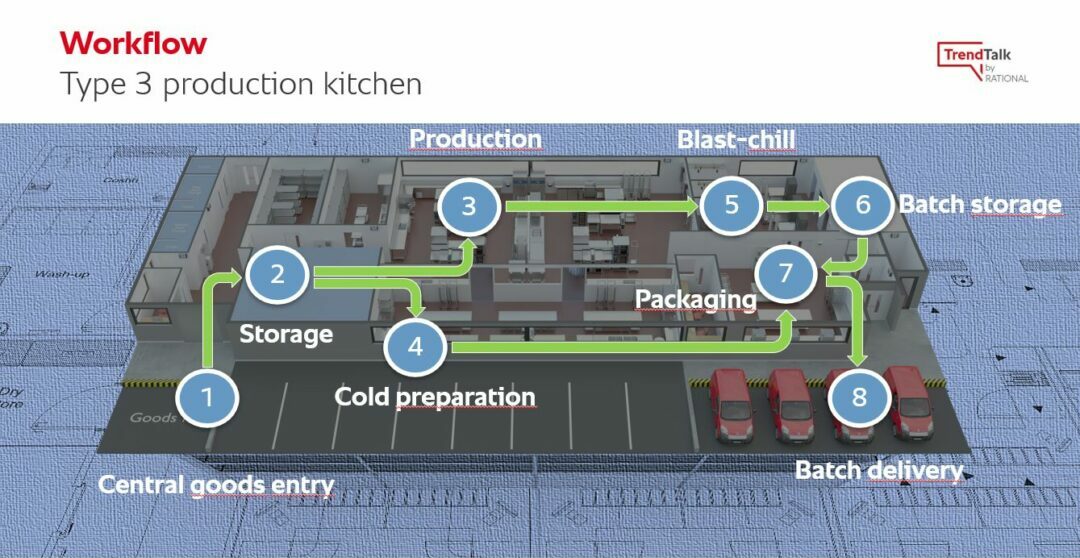
Image: RATIONAL
According to Leuschner, the installation of such systems is the ideal solution for kitchen preparation in the future. “Each of these preparation methods can be used with one or more equipment depending on the production cycle and the volume.” He added: “We also learned about flexibility before that multiple brands and the change of brands is common in this delivery ghost kitchen environment. So, what you cook today may be obsolete tomorrow, but still having this multifunctional production facility including the equipment means you will be able to react to any necessity, whether it is changing the manual, changing food preparation, or even getting different suppliers of food.”
Entering the ghost kitchens space is one thing, but operating them efficiently and creating enough margin is clearly another and there is still much to learn in this space from experts at the coal-face.
You can find more information on future TrendTalk webinars at our Webpage Ghost Kitchen TrendTalk.
Free Download: Ghost Kitchen Playbook
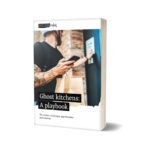
Download your Ghost Kitchen Playbook for free now.








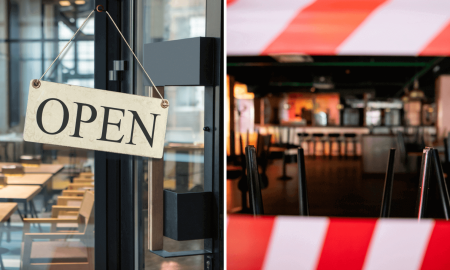








Pingback: The future of virtual restaurants | KTCHNrebel
Pingback: Heroes of hospitality 2021 | KTCHNrebel